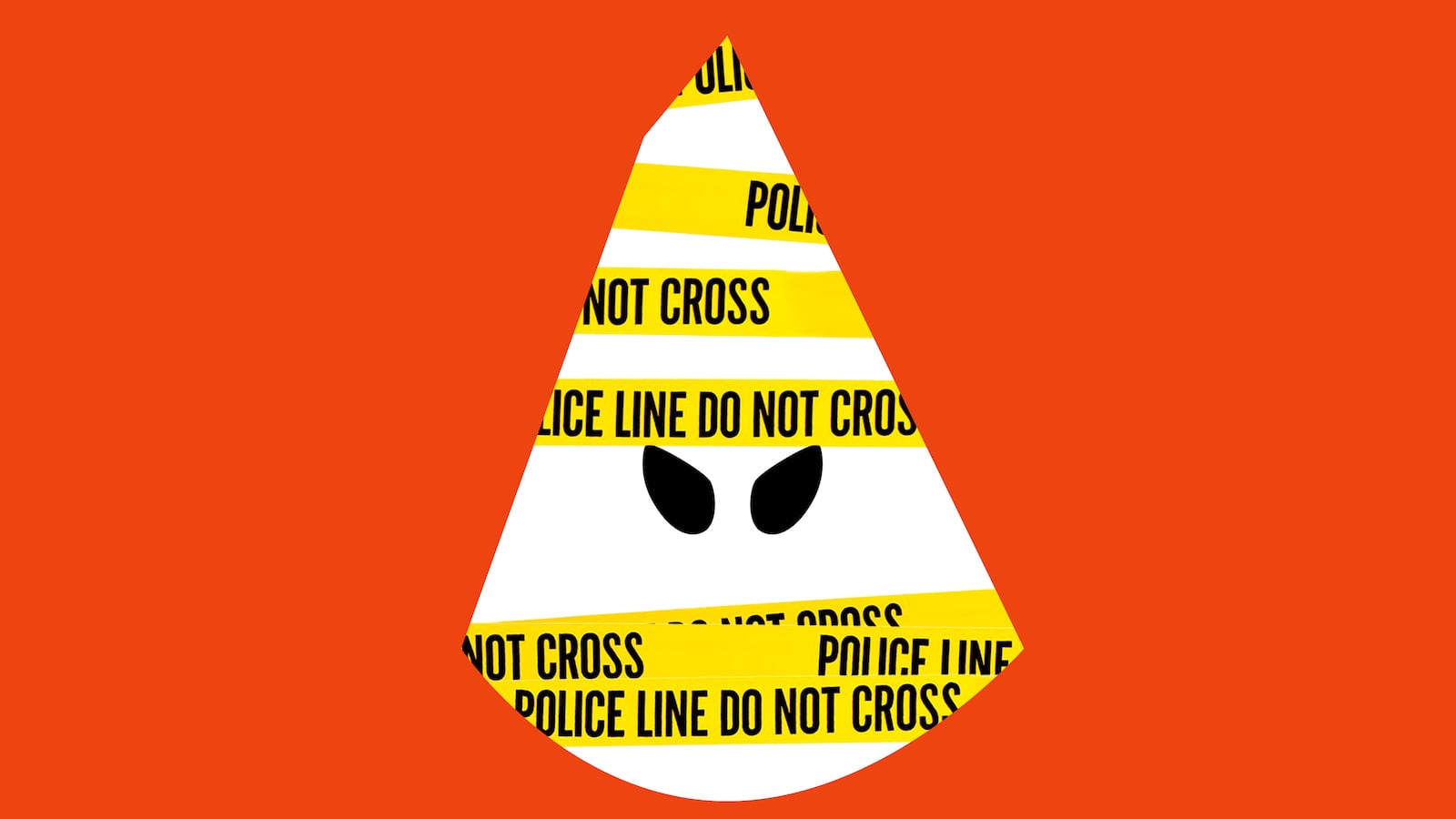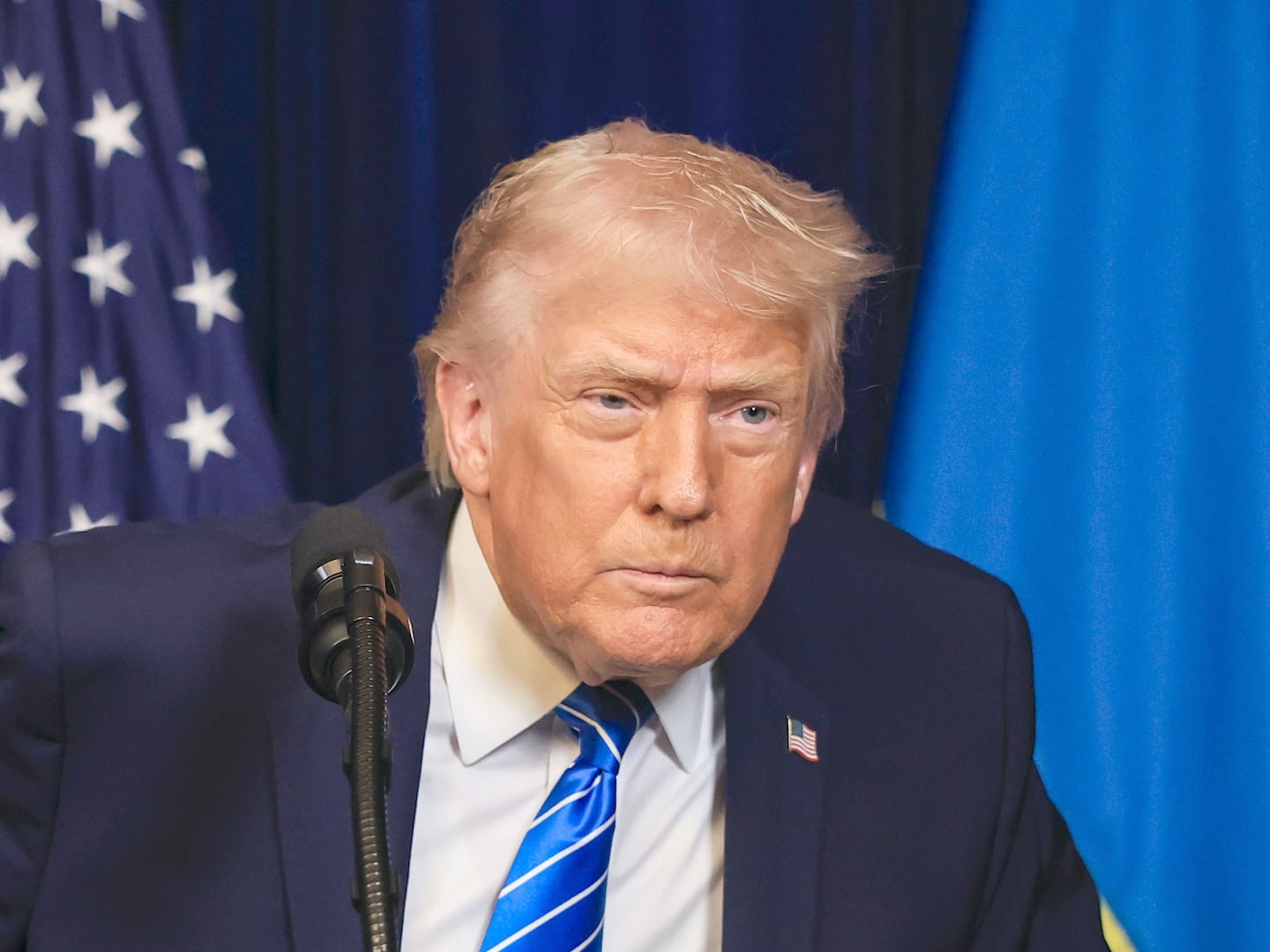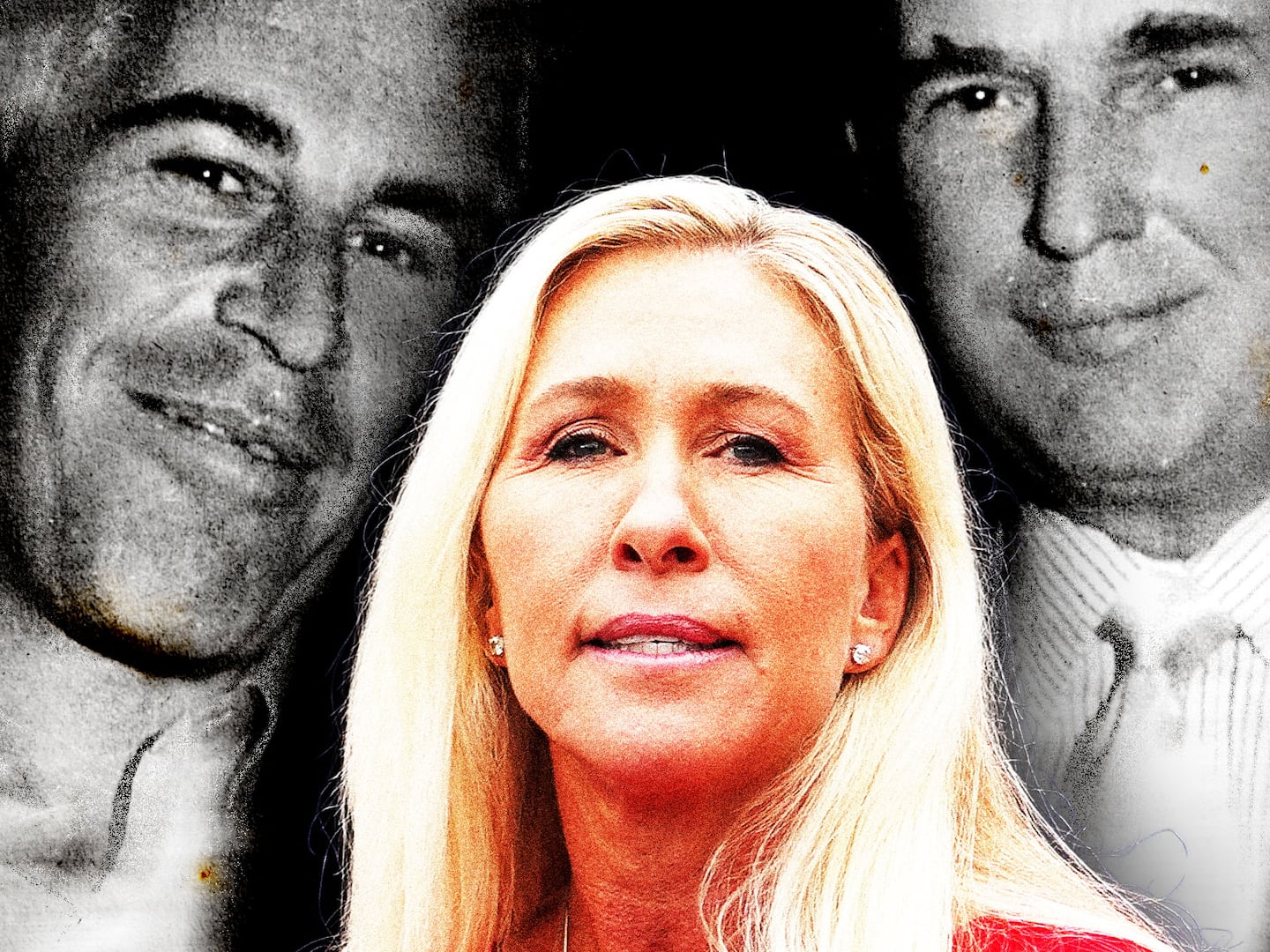If the FBI and the Department of Justice truly want to protect their agencies and officers from violent attacks, they must finally confront the white supremacists and violent MAGA extremists that exist within law enforcement.
Ever since the search and seizure of highly classified documents at Mar-a-Lago, the right-wing ecosystem has continued to amplify former President Donald Trump’s conspiratorial lies about the so-called “deep state.” As a result, there’s a giant target on law enforcement agencies.
On Aug. 15, the FBI and Department of Homeland Security (DHS) warned about a surge in threats against law enforcement, specifically identifying “multiple articulated threats and calls for the targeted killing of judicial, law enforcement, and government officials associated with the Palm Beach search, including the federal judge who approved the Palm Beach search warrant.”
As we saw on Jan. 6, some MAGA supporters take Trump and other right-wing ideologues literally and seriously.
Recently, a Pennsylvania man, Adam Bies, was charged with posting multiple threats against the FBI on social media. Another Trump supporter, Ricky Shiffer, was shot and killed after attempting to breach the FBI’s Cincinnati field office with an AR-15 and a nail gun. Shiffer, a Navy veteran, was known by the FBI to have associated with far-right extremist groups. He was also present at the Jan. 6 Capitol assault along with thousands of other Trump supporters, including Thomas Webster, a former NYPD officer, who was convicted of assaulting a fellow cop at the Capitol. For his crimes, the DOJ just announced it is seeking the longest sentence yet for a Jan. 6 defendant: 17.5 years.
This is an auspicious sign that the DOJ won’t show leniency to insurrectionists because they wear a badge. After all, Webster wasn’t the only police officer sacking the U.S. Capitol. There were at least 39 police officers from 17 states who took part in a failed coup attempt against our democracy, orchestrated in part by far-right militant groups like the Proud Boys and Oath Keepers, whose leaders have been indicted on charges of seditious conspiracy and other offenses related to the U.S. Capitol breach.
These violent groups have a membership that includes a disturbingly large number of law enforcement officials, veterans, and ex-military—and they even have ties with numerous Republican elected officials.
For example, GOP Rep. Mark Finchem of Arizona is an active member of the Oath Keepers and was present at the Jan. 6 rally. Pennsylvania’s Republican gubernatorial candidate, Doug Mastriano, is a Christian nationalist whose security team consists of at least one person with direct ties to the militia group. In January 2021, 12 U.S. Army National Guard members were pulled from Biden’s inauguration security team for having ties to right-wing militia groups or posting extremist views. Dan Bongino, an influential right-wing personality who peddles the big lie, was once a Secret Service member. Trump’s Secret Service team allegedly knew in advance about threats against House Speaker Nancy Pelosi, then-Vice President Mike Pence, and then-President elect Joe Biden on Jan. 6, but failed to report them. Oh, and they also mysteriously deleted their Jan. 6 text messages.
Something is rotten in the state of Denmark, and within our law enforcement agencies.
Dr. Heidi Beirich, a co-founder of the Global Project Against Hate and Extremism, believes America failed to appreciate the extent of law enforcement’s involvement in these groups until the Oath Keepers’ membership revealed the names of so many active duty and retired law enforcement personnel. Beirich teaches a course at the University of Southern California (USC) on extremism in law enforcement, and explained to me why law enforcement is such a fertile recruitment ground for hate groups and militias.
“Cops provide them legitimacy,” Dr. Beirich said. “Cops are seen as community leaders. They are also seen as more conservative than the average person. They’re someone who can bring in more recruitment. They’re kind of like veterans in that they carry the same imprimatur.”
Sadly, it shouldn’t have taken a failed coup attempt to force the FBI and DOJ to acknowledge this dangerous and growing threat within law enforcement considering they’ve known about it for more than 15 years.
In a 2006 internal bulletin, the FBI warned about white nationalists infiltrating the police to recruit members and disrupt ongoing investigations. In 2015, the FBI’s Counterterrorism policy guide warned that the white supremacists and far-right militant groups “often have identified active links to law enforcement officers.” In a leaked FBI intelligence assessment from 2021, the FBI’s division in San Antonino concluded that white supremacists and right-wing extremists would “very likely seek affiliation with military and law enforcement in furtherance of their ideologies.”
Unfortunately, the FBI has not been forthcoming about the rot in its house. In the aftermath of Jan. 6, and last year’s leaked report, Democratic Rep. Jamie Raskin blasted the agency for initially claiming there was no evidence of racist infiltration in law enforcement. In a statement, Raskin wrote, “the FBI's failure to level with the American people about organized racist infiltration of law enforcement is having dangerous and deadly consequences."
Those dangerous and deadly consequences are now arriving at their doorstep—literally.
Former FBI special agent Michael German, now a fellow with the Brennan Center for Justice, told me the FBI knew of this problem back in the 1990s when he was an undercover agent infiltrating white supremacist groups. He said the problem is so significant that FBI agents are warned to alter their counterterrorism techniques when investigating white supremacist and militia groups out of concern that their allies in law enforcement will tip them off. In 2020, German wrote a report, Hidden in Plain Sight: Racism, White Supremacy, and Far-Right Militancy in Law Enforcement, in which he concludes that the government’s response to this growing threat has been insufficient despite the numerous warning signs and intelligence produced by FBI analysts and agents.
I asked German why the DOJ and FBI have often turned a blind eye to this threat while aggressively investigating and prosecuting the War on Terror, which turned fellow Americans into suspects simply for being Muslim. “The FBI remains a predominantly white male organization—that isn’t by accident,” German replied. “The structural and explicit bias both exist within a system that predominantly protects white people and white institutions while looking at non-white people as institutions as subversive.” He said this in part explains why FBI managers prefer targeting other groups, namely Muslims, protest groups led by people of color, and anti-racist and anti-fascist groups, even though white supremacist terrorism is now the number one terror threat in America.
However, FBI Director Christopher Wray told lawmakers last year that the bureau has been sounding the alarm about this domestic terror threat for “a number of years now.” Frank Figliuzi, a retired FBI assistant director, echoes that sentiment and told me the FBI has emerged as an enemy of MAGA precisely because the agency is investigating the Oath Keepers, violent militia groups, and their “king”—Donald Trump.
“The FBI represents a giant speed bump to what they want to establish, which is an authoritarian, white nationalist society, which is anti-democratic, and has a very powerful president,” Figliuzi said. “And they don’t want brown people, and they want to stop any kind of immigration. The FBI stands in the way. They tolerate the local sheriff because they vote for him, but they don't want federal agencies breathing down their neck.”
White power movements and anti-government extremists, such as the sovereign citizens movement, have a long history of targeting federal law enforcement. For example, Timothy McVeigh’s white supremacist beliefs inspired an intense hatred of the federal government which resulted in his 1995 terror attack on Oklahoma City’s Alfred P. Murrah federal building that killed 168 people.
However, after the Jan. 6 attack and the latest threats against the FBI, there are no more excuses to ignore the domestic terror that hides behind the shield.
Dr. Beirich would like to see a “top-down policy” that finally confronts this threat. With over 18,000 law enforcement agencies in the U.S., each with different policies, she believes federal enforcement and oversight will be extremely difficult. For her, initiatives at the state level provide more hope. But even there, roadblocks remain. A recent attempt to ban cops from being in hate groups failed because there was a lack of agreement on the definition of hate groups. Still, Dr. Beirich believes rooting out extremist cops “should be a top priority” because they are threatening the very same communities they are supposed to protect and serve, and currently “we have no system to deal with it.”
Professor Joseph Darda, author of the essay “The Whiteness of Blue Lives: Race in American Policing” in the essay collection A Field Guide to White Supremacy, told me that since so many of these law enforcement institutions and agencies are run at the state and local level, federal intervention would not only be difficult but could also inspire blowback. “The second you try to issue federal level reform, there will be a fervor and, if anything, deepen the kind of support for police that we already see on the right,” he cautioned.
Figluizi would like to see a more centralized vetting process for police officer candidates, including assessing and training state and local officers to keep the bad actors from even getting their foot in the door. “Right now, it’s garbage in, garbage out, and we get what we pay for,” he said. “The departments that do it best are often from the affluent communities because they are funded correctly. We need serious tests, interviews, and specialized polygraphs to vet out and identify those who have racist and hate-based tendencies.”
German believes the solution really isn’t that complicated. “It’s not rocket science,” he told me. “Focus on the actual misconduct taking place. The actions are the problem, the ideas are not the problem.” German says the DOJ already has plenty of authority to go after civil rights violations by law enforcement officials. They could utilize the tools at their disposal, but the problem is they choose not to. He said you don’t have to search social media to uncover racist behavior on the job, you simply have to go down to the squad room and ask, “who are the racist agents?” and you’ll get the names. You can ask the community, “who is doing the most harm?” and they’ll tell you. You can look at the civil complaints and internal complaints and find out the bad actors. “Turning a blind eye,” he believes, “is an institutional choice.”
Communities of color have always been the victims of hate crimes and violence done by white supremacists, militias, and MAGA extremists who believe we’re trying to “replace” them. We’ve also historically been marginalized, targeted, and oppressed by the very saw law enforcement agencies whose duty is to protect and serve our communities. Our warnings and requests for reform are often ignored, ridiculed, or mischaracterized as irrational hatred of the police.
Now that the DOJ and FBI have become the targets of this hateful movement, perhaps law enforcement agencies will open their eyes, identify the extremists that have contaminated this country and its institutions, and aggressively clean their own house.








